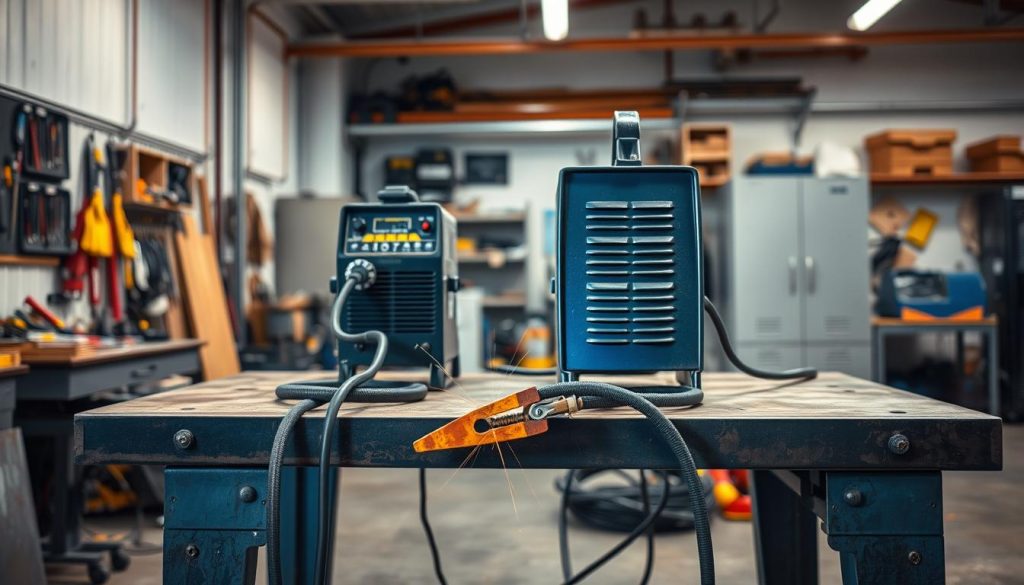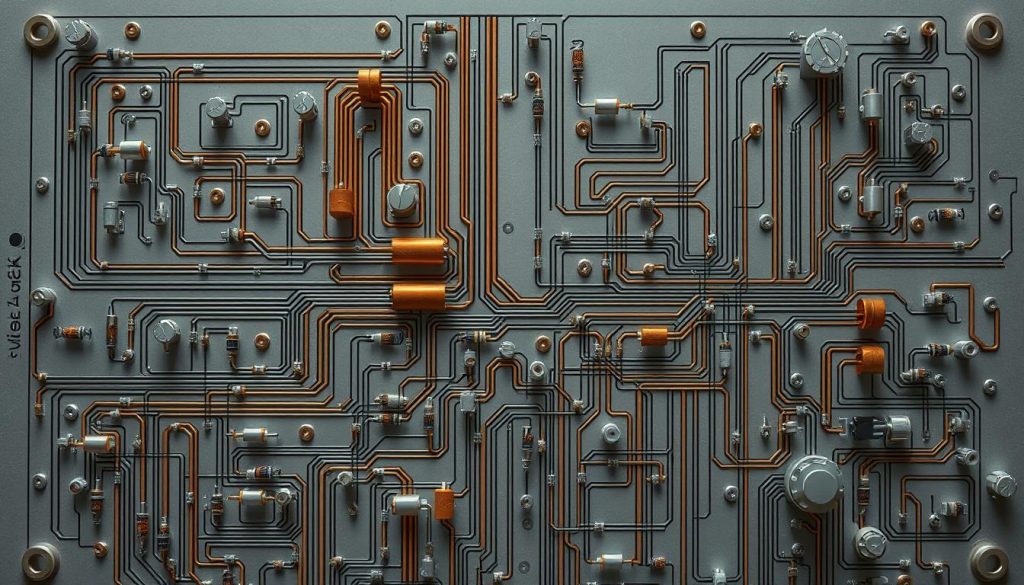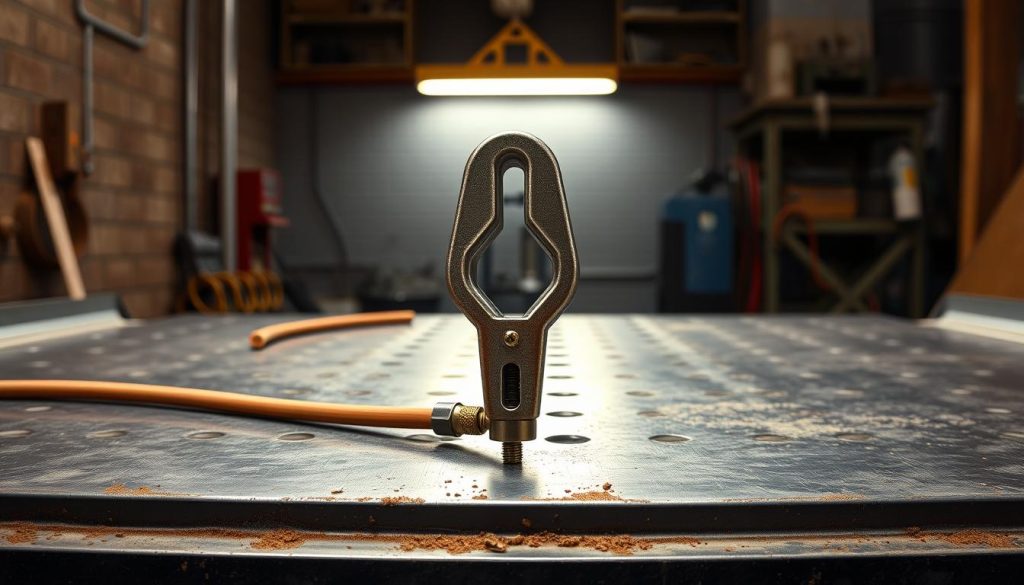
Have you ever watched a professional at work and wondered how they make it look so easy? The secret to smooth, consistent results often isn’t a fancy trick. It’s a fundamental step that protects both the welder and the quality of the work.
This essential practice is the cornerstone of personal protection and a stable electrical circuit. It’s the invisible shield that stops dangerous electrical currents from finding a path through you. Getting it right means fewer headaches and a much safer workspace.
This guide will walk you through the simple, effective methods that everyone should know. We’ll cover how to properly connect your equipment to create a safe, reliable path for electricity. You’ll learn practical steps for your welding machine and workpiece.
By the end, you will understand exactly why this is so critical. You’ll also know the common mistakes to avoid, whether you’re in a shop or on the go. Let’s build a foundation for safety and better results.
Key Takeaways
- Proper setup is the foundation for both personal safety and high-quality work.
- A correct connection creates a safe path for electrical current, protecting the operator.
- Simple, consistent practices prevent most common electrical hazards.
- Ensuring your workpiece is correctly prepared is as important as the machine setup.
- Avoiding common mistakes leads to a more stable arc and cleaner results.
- These principles apply to all environments, from professional shops to mobile jobs.
Introduction to Grounding and Welding Safety
What if I told you that one simple connection could make the difference between a perfect weld and a dangerous situation? This fundamental practice is often overlooked, but it’s the backbone of every successful project.
Overview of Grounding in Welding
In simple terms, grounding creates a safe path for electricity to travel. Think of it like giving electricity a designated highway back to its source. Your welding machine generates powerful currents that need somewhere to go.
Without this proper path, electricity might choose you as its route. That’s when accidents happen. A good ground connection ensures the current flows where it should—not through you.
How Grounding Impacts Safety and Weld Quality
The safety benefits are obvious. Proper grounding prevents electrical shock, which can be serious when working with metal. But there’s more to the story.
Have you ever had an arc that wouldn’t stay steady? Poor grounding often causes this. When your machine is correctly connected, you get smooth, consistent results. The electrical circuit stays stable, giving you better control over your work.
This stability means cleaner welds and fewer frustrations. It’s not just about protection—it’s about performance too.
Grounding Techniques for Arc Welding Safety
Have you ever struggled with an arc that just wouldn’t behave consistently? The solution might be simpler than you think. Getting your electrical pathway right makes all the difference between frustration and flawless results.
Understanding the Electrical Circuit
Think of your welding setup as a complete loop. Electricity travels from your machine through the electrode to create that bright arc. But here’s the key part – it needs a reliable path to return home.
This is where your ground clamp becomes essential. It creates the return route for electrical current, completing the circuit. Without this closed loop, you’re basically trying to weld with one hand tied behind your back.

Benefits of a Proper Ground Connection
What do you gain from getting this right? First and foremost, you eliminate the risk of electrical shock. A solid connection protects both you and your equipment from dangerous voltage surges.
But there’s more! You’ll notice immediate improvements in your work quality. The arc becomes stable and predictable. Your welds penetrate better and create stronger joints. No more wandering arcs or inconsistent results.
| Proper Connection | Poor Connection | Result Difference |
|---|---|---|
| Clean, bare metal contact | Rusty or painted surface | Stable vs unstable arc |
| Firm clamp attachment | Loose or weak grip | Consistent vs intermittent current |
| Direct to workpiece | Indirect path | Strong vs weak penetration |
| Proper cable condition | Damaged insulation | Safe vs hazardous operation |
Getting your equipment setup correct from the start saves time and prevents headaches. It’s one of those fundamentals that separates amateur results from professional quality work.
Step-by-Step Guide to Grounding Your Welder
Getting your welder properly connected doesn’t have to be complicated when you follow these simple steps. A good setup ensures electricity flows safely and your work turns out perfectly.
Selecting a Clean, Dry Grounding Location
First, find the right spot for your connection. Look for a clean, dry metal surface near your work area. Avoid painted or rusty spots that block electrical flow.
Why does this matter? Moisture, oil, or coatings create resistance. This can cause unstable performance. Your ground clamp needs direct contact with bare metal.
Always check for flammable materials nearby. Safety comes first in every setup. Position your connection close to where you’ll be working.

Attaching Ground Clamps and Cables Correctly
Before you attach anything, turn off your welding machine. Unplug it for extra safety. Locate the thick black cable with the clamp.
Inspect your ground clamp carefully. Clean off any rust or debris. Make sure the jaws grip tightly.
When you attach the ground clamp, press it firmly against the metal surface. You should hear a solid click. Test the connection with a gentle tug.
Position the clamp as close to your workpiece as possible. This creates the shortest path for electricity. A tight connection means better performance.
Double-check your cable for damage before starting. Frayed wires are dangerous. Taking these extra minutes protects you and your equipment.
Essential Equipment and Tools for Effective Grounding
Not all clamps are built the same, and picking the wrong one can lead to frustrating results. The right components ensure a strong, reliable connection every time you start your machine.
Quality equipment protects you and makes your work smoother. Investing in good tools pays off with better performance and long-term safety.
Choosing the Right Clamps and Cables
Why does material matter so much? It affects how easily electricity flows. The best clamps offer low resistance and can handle heat.
Copper is the top choice for most professionals. It’s highly conductive and very durable. These clamps resist corrosion and last for years.
Brass is another excellent option. It works well for many applications and is often more affordable. You get great reliability without the highest cost.
For the toughest jobs, bronze clamps are fantastic. They are built for heavy-duty industrial use where durability is critical.
Be cautious with zinc clamps. They are the least conductive and not suitable for serious work. They corrode quickly and can fail.
Grounding Techniques for Arc Welding Safety
| Clamp Material | Conductivity | Best Use Case | Durability |
|---|---|---|---|
| Copper | Excellent | All-purpose, heavy-duty | Very High |
| Brass | Very Good | General purpose | High |
| Bronze | Excellent | Industrial, heavy-duty | Extremely High |
| Zinc | Poor | Light-duty only | Low |
Don’t forget the cable itself. It must be thick enough to carry the current safely. Inspect your wires regularly for any damage like fraying or cracks.
A strong spring in the clamp is also vital. It keeps constant pressure on the metal surface for a solid connection. This prevents heat buildup and unstable arcs.
Common Grounding Mistakes and Best Safety Practices
Imagine finishing a perfect weld only to discover your equipment was damaged by a preventable error. Even experienced professionals sometimes overlook simple mistakes that compromise both safety and work quality, that is why need to take part of arc welding safety practices. Let’s explore how to avoid these common pitfalls.
Avoiding Poor Surface Contacts and Loose Connections
The most frequent mistake? Attaching your clamp to a dirty or painted surface. Rust, paint, and grease block electrical flow like a roadblock. Without proper metal-to-metal contact, your ground connection becomes weak.
This weak connection causes arc instability and creates shock hazards. Always clean your surface with a wire brush before attaching the clamp. It takes seconds but makes all the difference.
Loose connections are another hidden danger. A clamp that isn’t tight creates resistance and heat. This can actually weld your clamp to the workpiece or table. Not a fun situation to deal with!
Maintaining Equipment for Long-Term Safety
Damaged cables don’t just reduce performance—they’re serious fire hazards. Make sure you inspect your ground cable before every session. Spot any fraying or cracks? Replace it immediately.
Establish a simple maintenance routine. Clean your clamps regularly to remove rust and debris. Check that spring tension remains strong for a firm grip.
Using a multimeter to test your setup takes just a minute. This confirms your equipment is properly grounded and ready for safe operation. Keep your welding table clean and free from rust buildup too.
Without proper maintenance, even the best equipment will eventually fail. Regular care ensures your connection remains reliable when you need it most.
Expert Mobile Welding Services by Xpress Mobile Welding Phoenix
When your project demands precision and protection, sometimes the best solution is calling in the experts. Our team brings professional equipment and knowledge directly to your location.
Contact Information and Service Area
Xpress Mobile Welding Phoenix serves the entire Gilbert, AZ area and surrounding communities. You can reach us at (623) 263-0277 for immediate assistance.
Our headquarters is located at 922 N Colorado St, Gilbert, AZ 85233. We’re ready to mobilize to your job site whenever you need reliable welding services.
Why Local Expertise Matters
Professional welders understand how to adapt their setup to different working environments. Local knowledge makes a real difference in achieving quality work.
Our team has seen how improper methods can lead to equipment damage. That’s why we maintain strict standards for every project. From small repairs to large fabrications, we ensure proper techniques for consistent results.
Need arc welding services in our service area? Contact us today for professional assistance you can trust.
Conclusion
Think of a solid ground connection as the reliable anchor for your entire welding project. It keeps everything stable and secure.
This guide has shown you that a proper setup is not difficult. It just needs your attention each time you work. You now know how to choose a clean spot and attach your clamp firmly.
Following these steps protects you and your equipment. It also leads to a better final weld. Your quality of work improves because the electrical circuit behaves predictably.
Keep these emergency procedures for electrical incidents in arc welding in mind for every job. A consistent process builds a foundation for safety and success. Now you can approach your work with greater confidence and achieve professional results.
FAQ
What happens if I don’t ground my welding machine?
Without a proper ground connection, the welding circuit is incomplete. This can cause the electrical current to find an unintended path, like through your body. This leads to a severe risk of electrical shock and can also damage your welding equipment. Your welds will likely be poor quality, weak, and inconsistent.
Where is the best place to attach the ground clamp?
Always attach the ground clamp directly to the clean, bare metal of the workpiece you are welding. If you’re working on a welding table, you can clamp it to the table itself, but only if the table is clean and the workpiece has solid metal-to-metal contact with it. Never clamp to a painted, rusty, or dirty surface.
Can I attach the ground clamp to the workbench instead of the metal?
Only if your workbench is a dedicated, clean metal welding table and the workpiece is making direct, clean contact with it. Attaching the clamp to a wooden or non-conductive bench will not complete the circuit. The electricity needs a clear path back to the machine, so attaching directly to the workpiece is always the safest and most reliable method.
How do I know if my ground connection is good?
A good ground connection is tight and secure. When you attach the clamp, it should bite firmly into the metal without slipping. Before you start, do a quick visual check. Is the clamp on clean, shiny metal? Is the cable tight and not frayed? If your arc is stable and smooth when you weld, that’s a great sign your ground is working properly.
Why is my welding machine shocking me?
This is a serious warning sign of a faulty ground. The most common cause is a poor ground connection on the workpiece. The electrical current is escaping and using you as a path to the ground. Stop working immediately. Check that your ground clamp is attached securely to clean, bare metal. Also, inspect your cables and clamps for any damage. Always wear dry, insulated gloves for protection.
What maintenance does my grounding equipment need?
Your ground clamp and cable are vital for safety. Regularly check the cable for cuts, fraying, or damaged insulation. Keep the clamp’s jaws clean and check that the spring is strong so it grips tightly. A little maintenance prevents big problems, ensuring a safe welding process and quality work every time.
